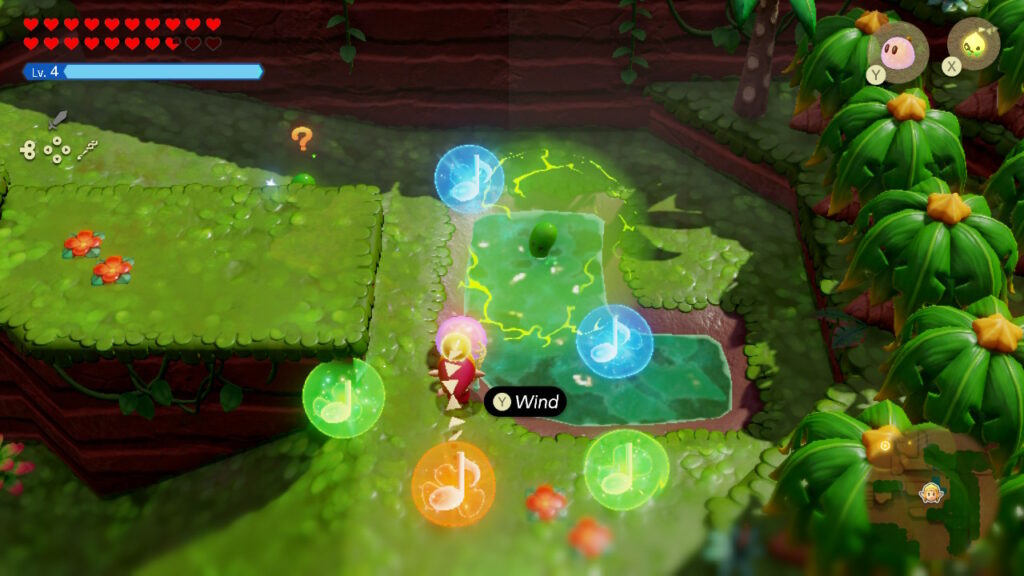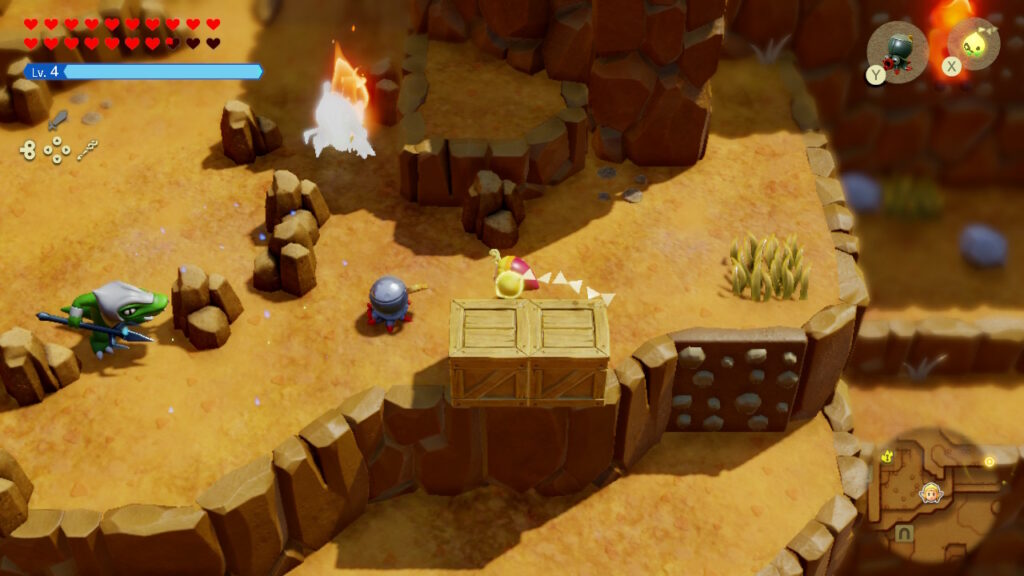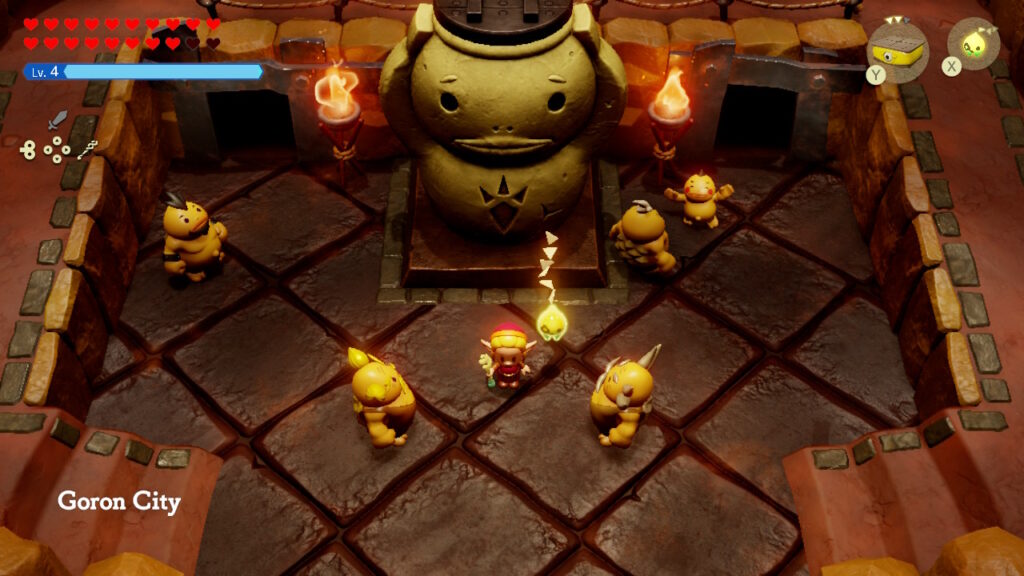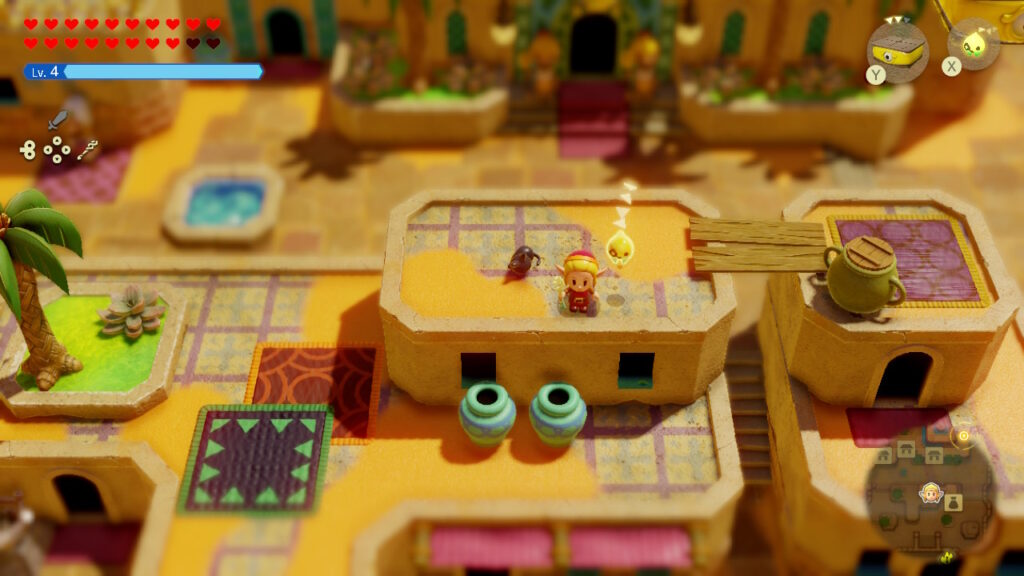When it comes to design of recent Zelda games, a lot of them seem to be trying to merge the original formula with the new one, to mixed levels of success. Breath of the Wild set the groundwork for a sandbox style Zelda game, but lost the dungeon exploring aspect due to the simplistic nature of the shrines and Divine Beasts. Tears of the Kingdom attempted to fix this by including ‘proper’ dungeons and bosses, but ended up mostly reskinning the Divine Beasts into more appropriately themed locations with better bosses.
And now Echoes of Wisdom seems to be the next step in the process. Designed as Zelda’s solo outing and made by the same folks as the Link’s Awakening remake on Switch, it appears to be an attempt to merge Link Between Worlds and Tears of the Kingdom in a more traditional style 2D Zelda format.
But does it work?
For the most part, yes. Indeed, there are a lot of things that were done right in this game.
The new echo system makes exploring the overworld fun, since you can basically go anywhere at any time without having a literal hoverbike. The dungeons are a marked step up from those in the previous outings, with actual keys and maps and unique bosses making them feel closer to Zelda dungeons of yore…
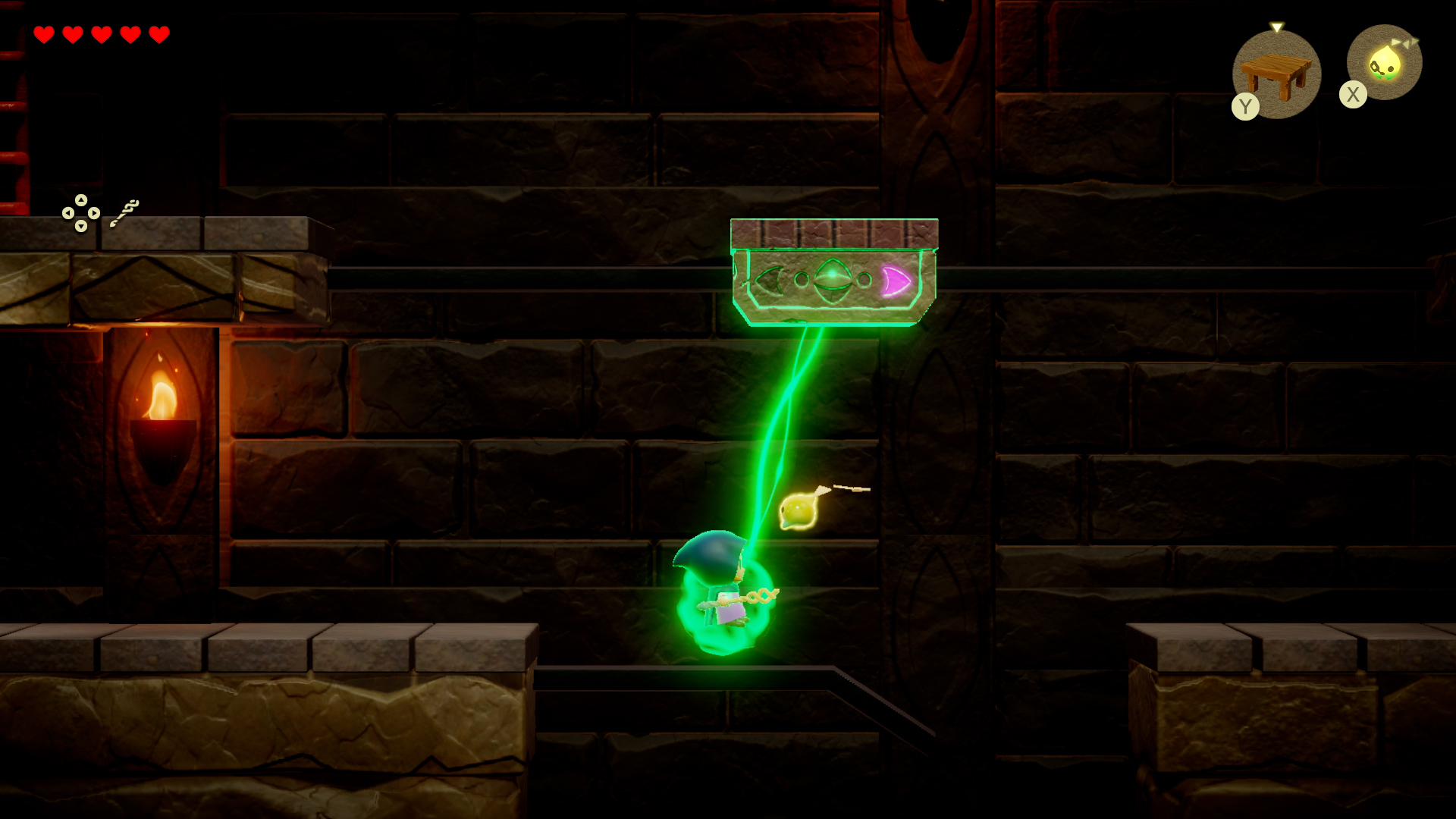
The dungeons have puzzles and obstacles this time around
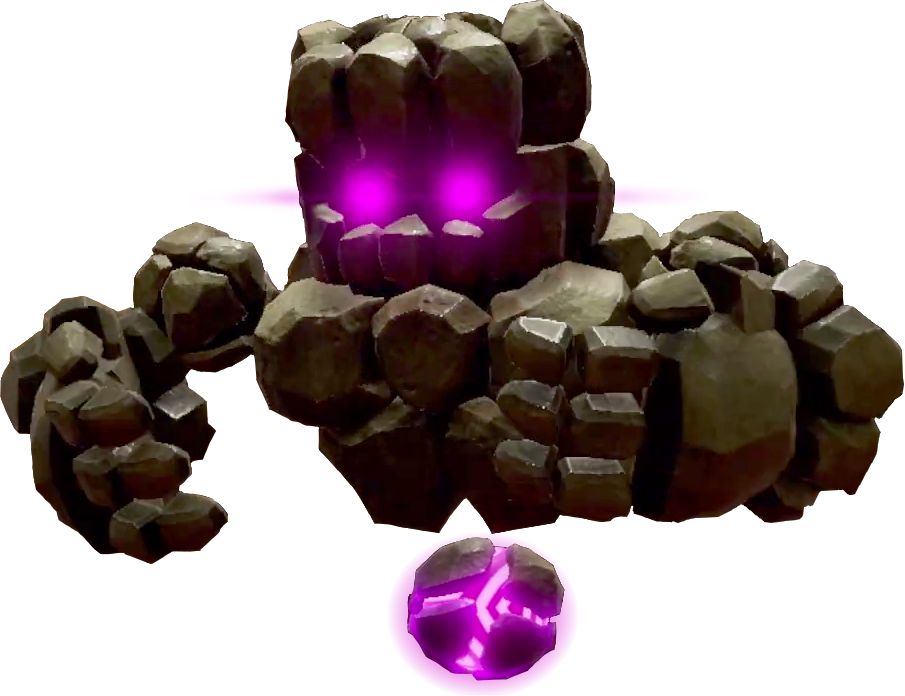
Each dungeon has a unique boss, like the Seismic Talus found in Suthorn Ruins
Plus, there’s an awful lot of neat side content here too. Extra dungeons and bosses, various rifts and caves providing overworld puzzles, all manner of optional echoes and accessories… it’s a fun time, and one which definitely provides value for money for those into all that stuff.
It just has a few design issues brought over from its inspirations that bring it down here and there, and some performance issues that are somewhat inexcusable for a game like this.
So let’s look at it a bit further, starting with the game’s presentation…
The Review
Graphics
Overall, it’s pretty good. The style is mostly the same as the Link’s Awakening remake, albeit with character and world design elements from Link to the Past and Breath of the Wild thrown in alongside things from that game. They’re very charming to look at with plenty of nice expressions from various characters and fit the game perfectly.
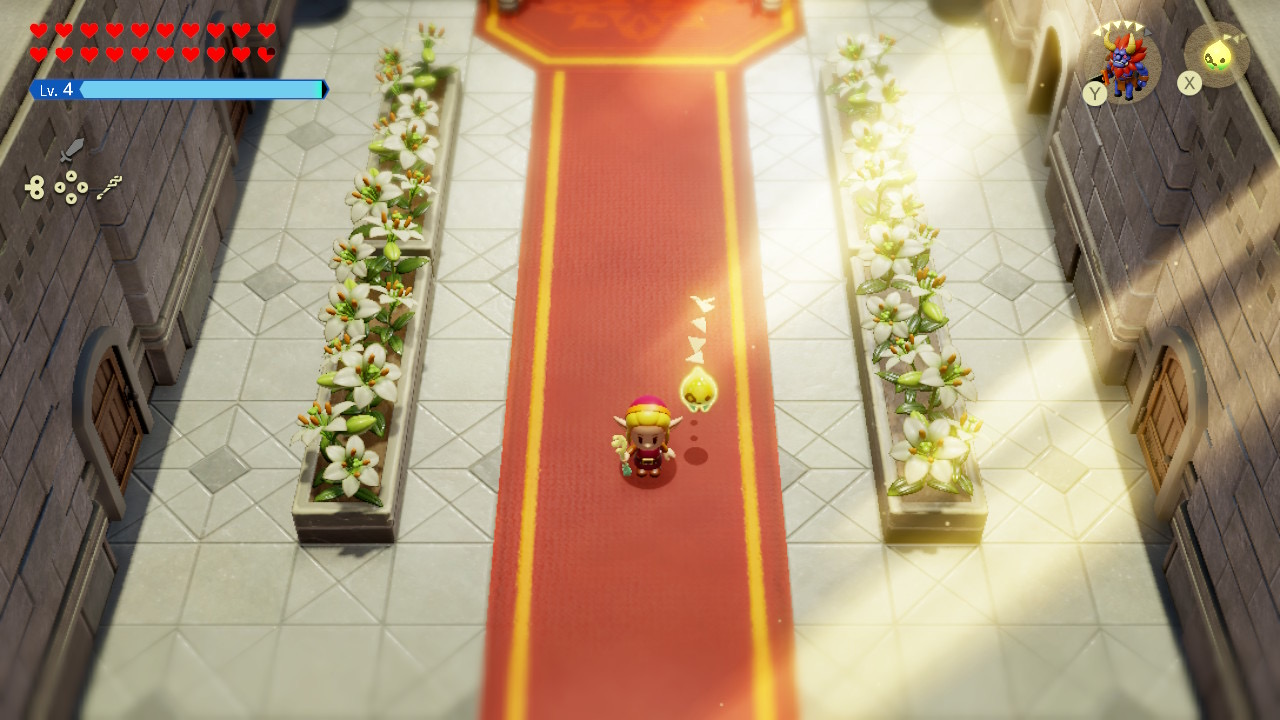
The game is charming to look at with some lovely visual effects
What doesn’t fit on the other hand is the game’s performative. You see, while you’d expect something like Tears of the Kingdom to have some performance issues due to how ambitious and giant in scope it is, a game like this feels like it should run at a silky smooth 60fps.
Alas, that’s not the case. Instead, the frame rate technically runs at 60fps, but often drops down to a fixed 30fps when there’s too much going on. It’s rather jarring really, especially on TV mode, and makes us wonder whether it’s due to a poorly optimised engine or simple Switch hardware limitations.
Hence while the graphics are nice enough, the performance is poor.
Music
Musically on the other hand, the game is decent. The boss and dungeon themes are excellent (especially the final one), the overworld music has a nice charming feel to it, and a lot of the more incidental themes are good too.

But it’s not a particularly memorable soundtrack as far as Zelda soundtracks are concerned, paling in comparison to the likes of A Link Between Worlds or the 3D Zelda titles. Solid, but generally nothing amazing minus a few exceptions.
Gameplay
So that brings us to the gameplay. And it’s this aspect that’s honestly hardest to rate about Echoes of Wisdom.
Since as we mentioned earlier, it feels like a hybrid between traditional Zelda and Tears of the Kingdom… for better or worse.
On the bright side, the echo system is super creative, and makes exploring the world an absolute joy. You can summon enemies to fight for you with unique abilities, you can place platforms and objects to scale even the highest of walls and glide over even the biggest gaps, and the level of creativity afforded for things like puzzle solving is almost unmatched here.

Clever use of Echoes can get you anywhere at any time, for better or worse
It’s literally the Ultrahand of Echoes of Wisdom, which is made even funnier when Bind and Reverse Bond are literally 2D Ultrahand as is.
And those abilities fit perfectly with the echoes too. Being able to move them around as weapons or items or being able to connect to enemies and objects to fly around is awesome, and opens up a ton of awesome gameplay possibilities.
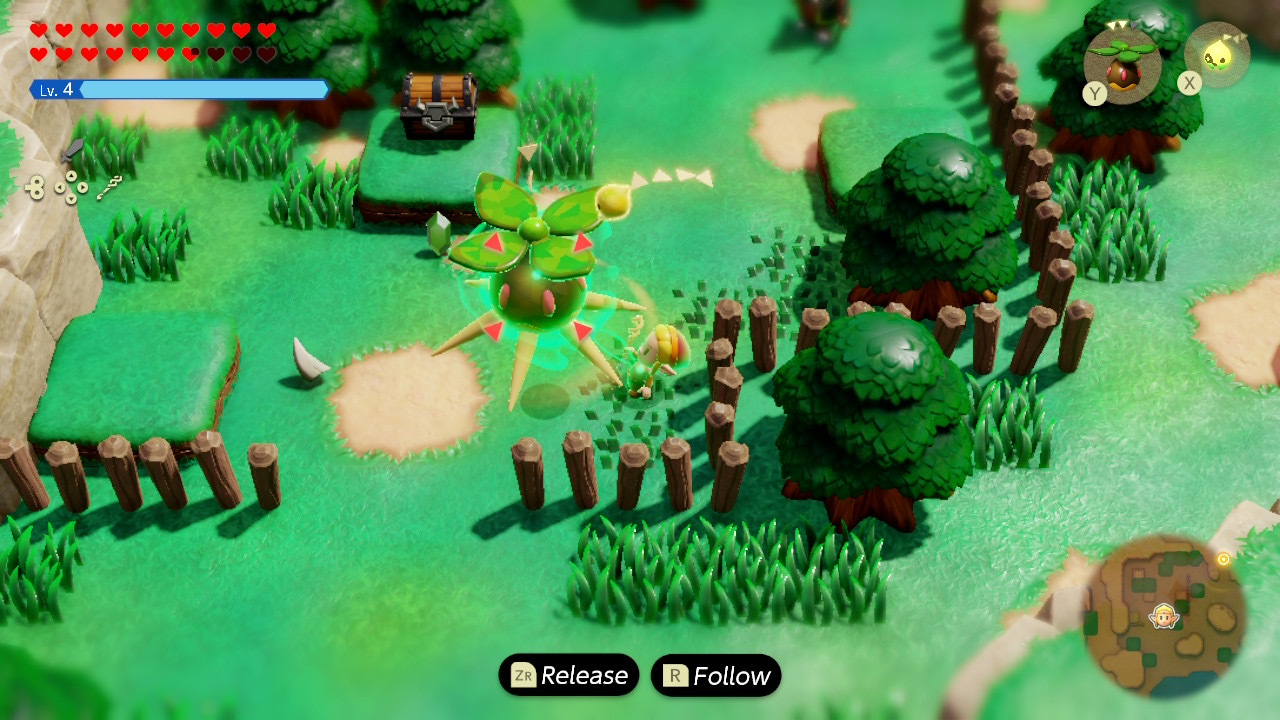
You can bind Echoes and use them as weapons, like with this Peahat here
Unfortunately, while it’s all very good mechanically, it also falls into many of the same traps that BotW and TotK did previously. Namely, how easy it is to trivialise everything with the same solutions over and over again.
Yep, Echoes of Wisdom has a hoverbike problem. It’s not quite as busted here due to echoes having more unique abilities and dungeons being less cheesable, but it exists nonetheless, and means that many players will find four echoes that work fine for 99% of puzzles and stick with them through thick and thin.
For example, 90% of traversal challenges end up being solved by Crawtulas, Water Blocks and Platbooms, while most combat ones end up coming down to “take your most powerful echoes and spam the hell out of them”.
These guys will get you ANYWHERE
So, you’ll have about 10 or 20 favourites you’ll keep coming back to throughout the game, and the rest of them will probably collect dust in the notebook. It’s still fun, and it’s nice to see the creative solutions other players come up with for these puzzles…
But it’s also a setup that lets the dungeons down to at least some degree. There’s no ability to require a particular ability like there was in Zelda games past, and hence no reason to really design anything too advanced here. The puzzles are kept limited by an inability to know what the player actually has, and a need to keep everything as open-ended as possible.
It’s a great system for the most part, but not a well-balanced system overall, nor one conductive to difficult puzzles and obstacles.
And there are also a few other TotK related issues in the UI too. Namely, how the echo menu has the same issues as Fuse does in that game.
It displays every single echo in a long horizontal line you have to scroll through, with no ability to favourite any of them.
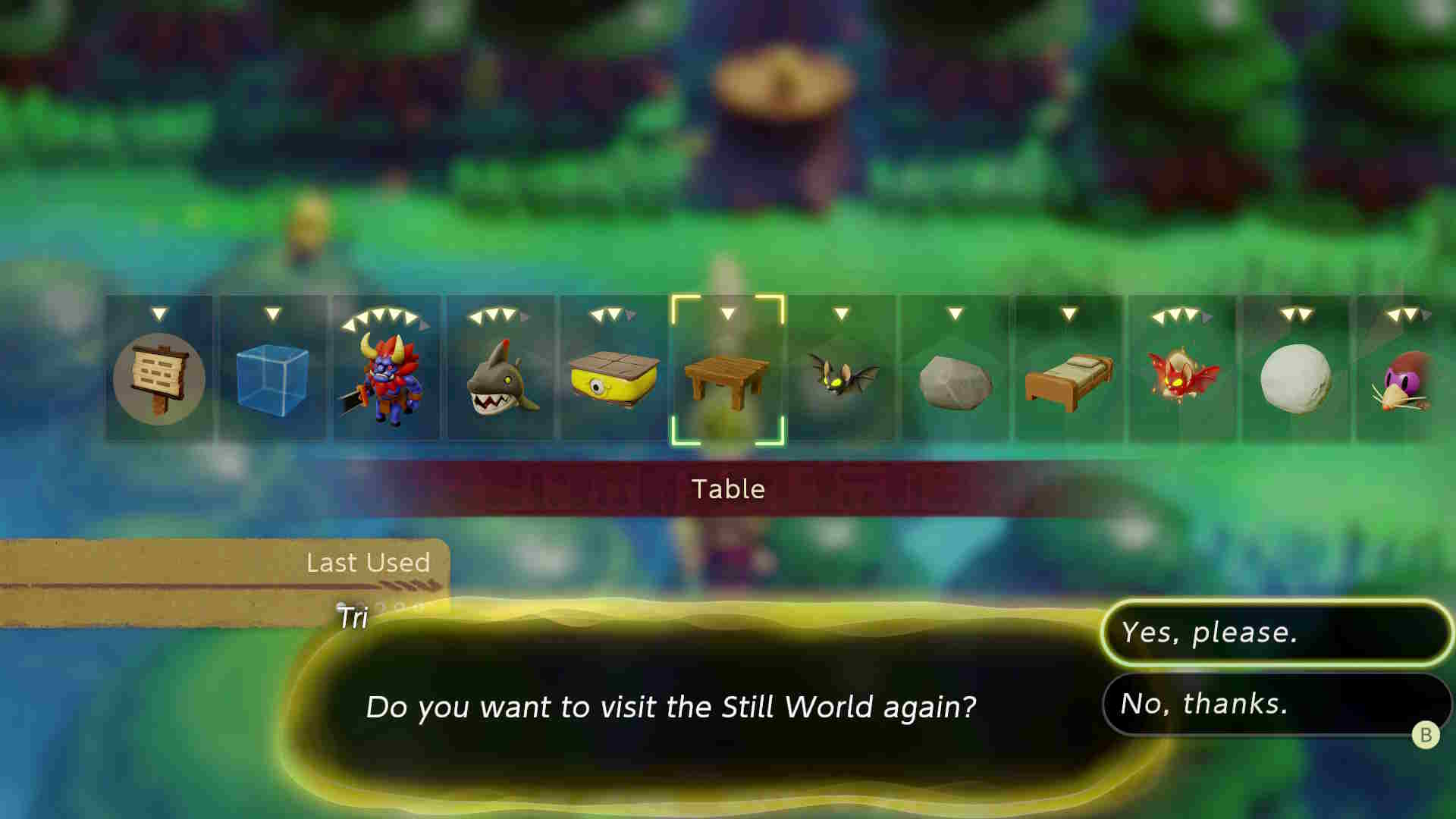
Yes, this Echo list usage is glitched, but look how ridiculously wide it is!
Which is just as bad here as it was TotK. You see, while that layout works fine for automatons (which you get about 6 of in the game), it fails miserably with the echoes due to just how many there are.
As a result, finding one in the list can be a total nightmare, and it’s awkward enough that manually selecting it from the notebook can sometimes be quicker and easier than trying to find it in the quick select menu.
And while a grid view does exist here, it’s a bit hard to figure out the existence of, and merely a band aid for the greater problems the UI has in store. Laying out everything in a way that doesn’t let you favourite or categorise items is bad design, period.
Ah well, at least the automatons avoid this issue due to their low number.
With said automatons basically being robot echoes you charge up and unleash on your enemies. They’re cool concepts, and their designs are excellent…
But we still question how useful they’ll be to most players. They’re powerful, and they’re certainly useful if you get them…
Yet they’re also kinda irrelevant too. They’re annoying to get, are possible to miss out on for about 60% of the game, and have virtually zero presence in the story or sidequests here. They’re fun, but irrelevant overall.
Speaking of quests, they’re about what you’d expect. You’ve got 15 or so main quests that unlock and complete during the story (complete with final one that only gets temporarily completed during the ending), and 50 side quests to find through Hyrule. They’re pretty fun, and (unlike the wild era games) actually somewhat worth it this time around, since accessories and clothing are usually either in caves/dungeons or given as quest rewards.
As for how those work… well, it’s kinda like armour from the later games. The clothing is cosmetic, but mostly exists to look cool (the exceptions being two sets that let Zelda talk to cats, and one which gives Zelda a large spin hitbox), while the accessories all provide benefits when equipped.
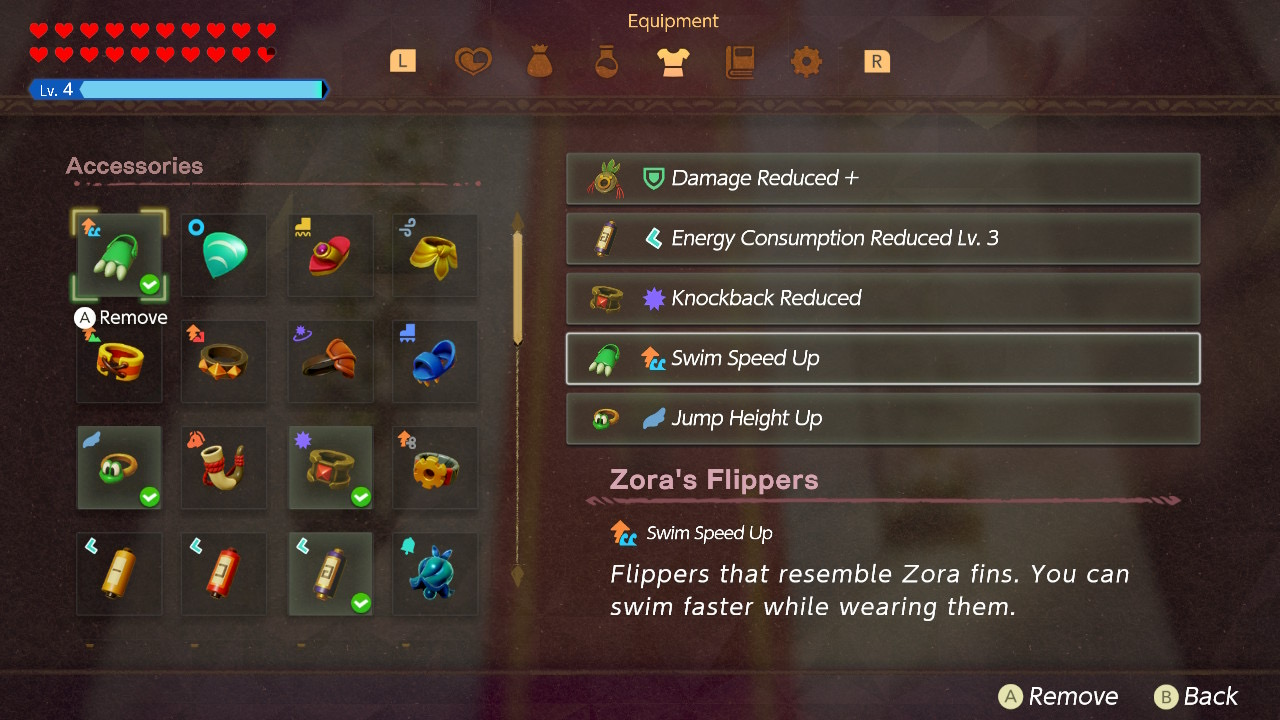
Accessories are this game’s main form of clothing/armour
These range from swimming fast to taking less knockback to using less energy in Swordfighter form, and are well worth looking for in this game. They’re a neat series of items, and you’ll have a reason to use most of them by the endgame too.
Finally, there are smoothies. These are the food equivalent of the game, where mixing two ingredients gives you a smoothie or potion that helps in various ways. Some let you breathe underwater for longer or swim faster, some let you take less damage, some make you fireproof or provide warmth in snowy climates…
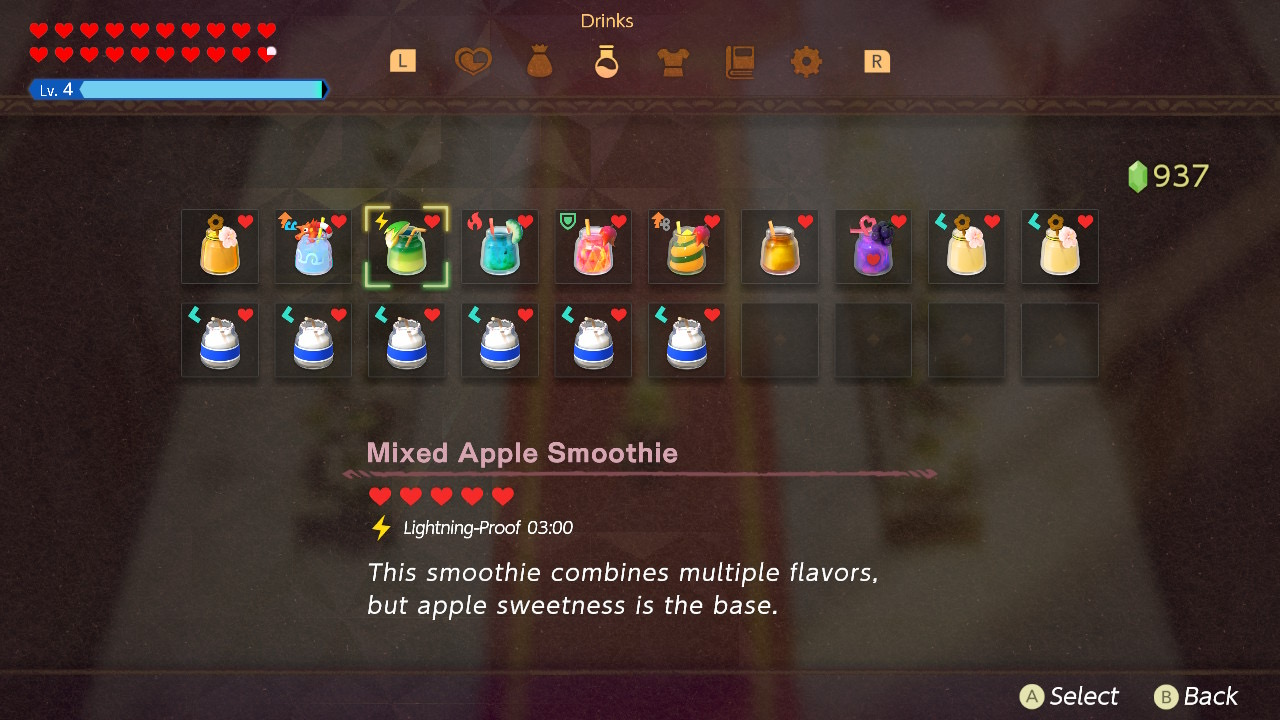
Smoothies replace Meals in Echoes of Wisdom
In other words, the usual BotW/TotK meals, except in smoothie form.
What’s more, this game makes them more important than ever. Because you see, Echoes of Wisdom does not have inns, at least from what we can remember. And while there are beds, those are a tad slow to heal you, at least if you don’t keep jumping in and out of them.
So, it’s a good thing smoothies are easy to make here, otherwise, the game would be an utter chore to heal in.
Either way, those are the mechanics in play here. And overall? They work well.
Echoes are game changing, though perhaps a little too cheesable. Smoothies play the role of food, while accessories play the role of armour. Plus, there’s a thorough set of side quests to play with too.
Still, what about the story and world? Is that fun to experience and explore?
For the most part, yes. The echoes mean you can go virtually anywhere at any time, and there are tons of secrets and interesting things to find. We’ll discuss those later, but for now? Just note that this isn’t like the wild era where chests contain a single useless weapon or a few materials. There are actually worthwhile things to find in the world here, and worthwhile collectables everywhere you like.
What we’re a tad more mixed on is how nostalgia heavy it all feels.
Cause you see, Echoes of Wisdom is probably the most ‘Zelda’ like a Zelda game has ever been, despise Link not being the protagonist this time around.
You’ve got a very standard story formula, with all the usual beats. Epic opening, Hyrule Castle escape, saving three regions, mid game pseudo finale, more dungeons/quests, true finale.
You’ve got a ton of enemies and bosses from previous games, including such otherwise forgotten titles as Zelda 2 and the Oracle games.
And many of the characters seem to be carbon copies of others from throughout the franchise, if they’re not appearing reappearing by name.
It’s awesome for longtime Zelda fans and great for people looking for nostalgia, but it can also feel a too safe too, at least prior to a certain reveal we won’t spoil here.
Yeah, we’ll let the folks reading this learn about that one. It’s probably the biggest lore shake up the series has seen since Skyward Sword, and one that most players would never see coming at all.
Still, the story and world are generally good (albeit on the safer part for the first half of the game), the dungeons and boss fights are a highlight, and the echo system is great fun to use.
You’ll just have to deal with a few awkward UI issues and quality of life failures along the way.
Game Length/Replay Value
Regardless, onto the length and replay value now. How does that stack up? How long is Echoes of Wisdom anyway?
Well, it depends what you want to do. If you just want to beat the main quest, you can be done in a weekend. 15 hours is what we’ve heard for the main story alone, and it tracks pretty well with our record too. In that sense, it’s basically on par with A Link Between Worlds.
But that’s not true if you go for 100% completion, since there’s way more optional content here than in 2D Zelda games past. You’ve got heart pieces making a triumphant return, with another 40 of them spread across the map. You’ve got Might Crystals everywhere, which are used to power up Zelda’s Swordfighter form…
And you’ve got a ton of other things to collect too. Great Fairy Fountain upgrades, accessories and clothing, dozens of smoothie combinations to make…
Plus, stamps. Lots and lots of stamps.
Yeah, this game loves stamps. Put simply, there’s a character called the Stamp Guy that flies around and gives you prizes for filling out your stamp card, and his stamp stations are literally everywhere. The Gerudo Desert, Eldin Volcano, Jabul Waters, Mount Hebra… they’re all over the place, and in some surprisingly crazy locations too.
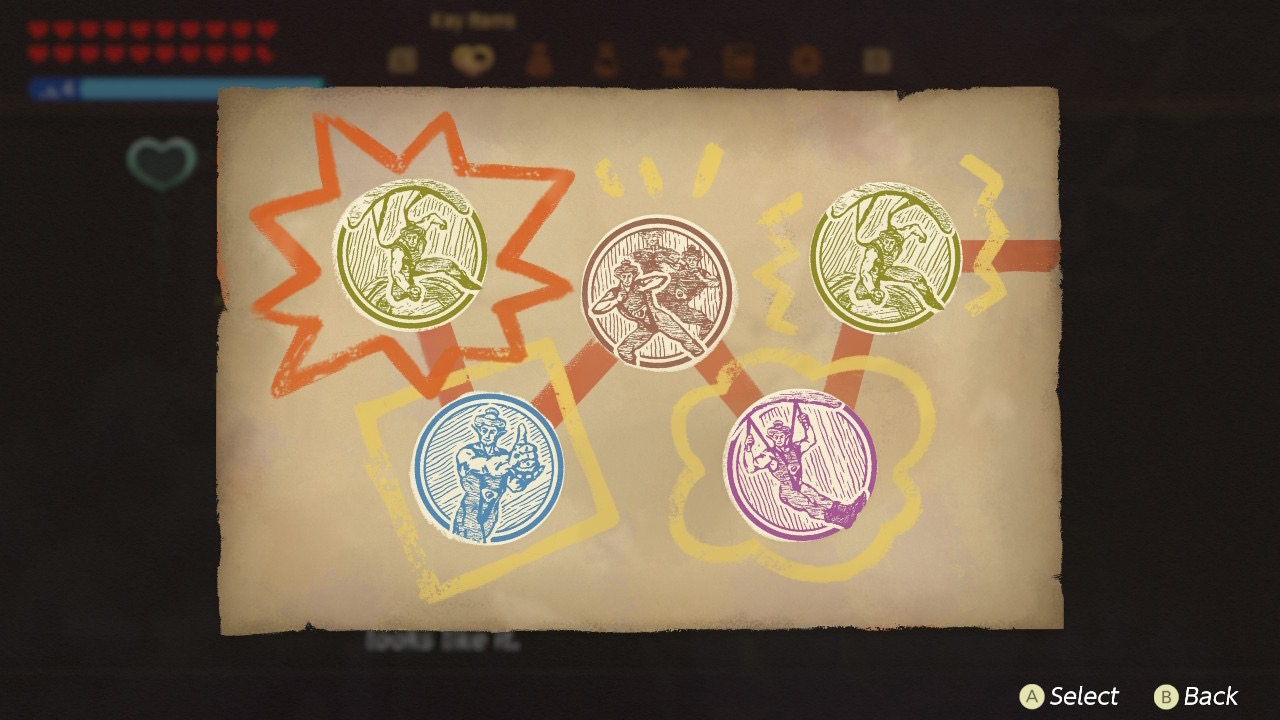
Stamps are a major collectible in this game
As a result, you’re given another clear incentive to reach every nook and cranny on the world map here, since any row of trees or mountains could be hiding the way to a secret ledge or alcove with a stamp pedestal on it. They’re pretty clever too, with the one in the mountains near the Eternal Forest being a particularly tricky one to find.
And we’re never even getting into the secret dungeons here. Yes, there are secret dungeons in this game. Complete with bosses not found anywhere else, and with attack patterns at least somewhat on par with ‘regular’ bosses from past Zelda games.
That’s incredible if you ask us. Especially given that at least two of them end with returning bosses from other games in the franchise to boot.
There’s also the echo list to discuss here, since it’s both massive and mostly optional to fill out. Yeah, you’ll get some echoes following the story, like the beds and tables and water blocks and temple statues…
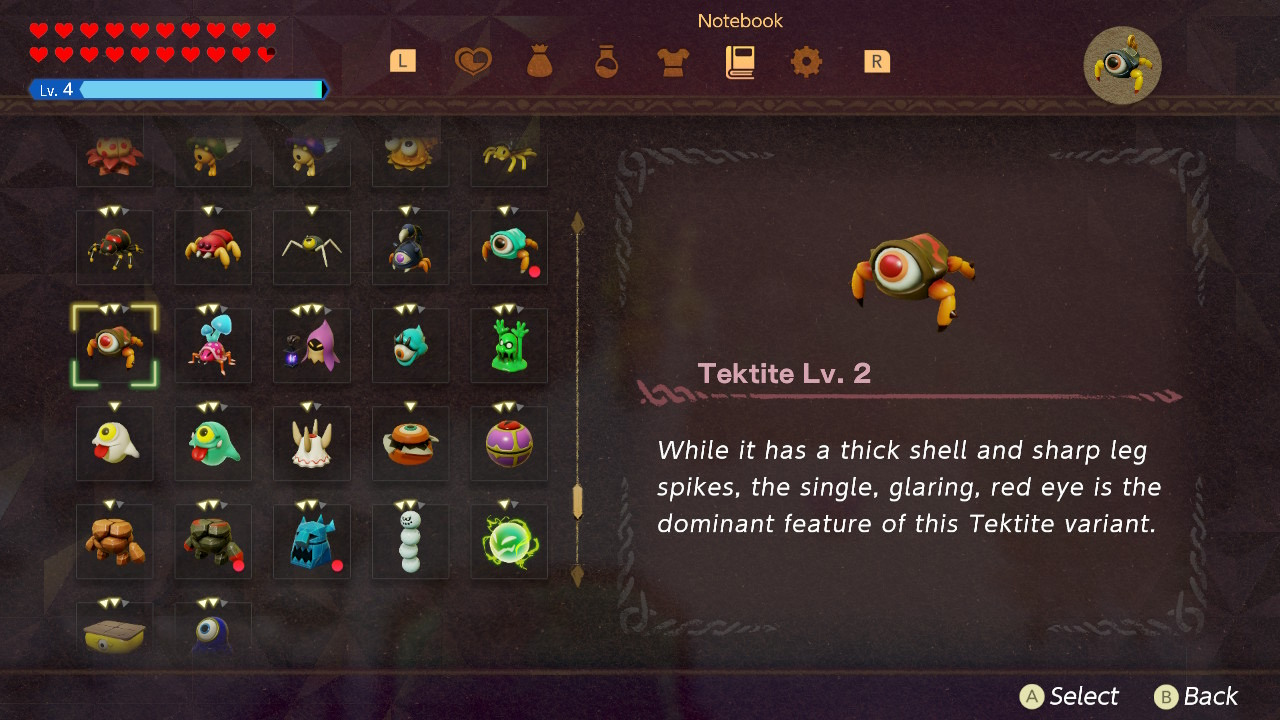
The list of Echoes in Echoes of Wisdom is enormous
And there are plenty of enemies you’ll just bump into on the way, like Moblins, Darknuts, Gibdos and Strandtulas…
But there are also dozens you’ll only encounter if you explore Hyrule from top to bottom. For example, the most powerful Lizalfos and Darknut echoes are basically mini bosses at the end of extra dungeons, while the Lynel requires you to follow a sort of puzzle questline to encounter and unlock it.
So the game makes even enemy and ‘mini boss’ encounters interesting here, since the reward is a powerful ally for the rest of the game.
Great stuff, and a fantastic incentive to scour the world from top to bottom for sure.
Hence as far as extras and replay value are concerned, there’s plenty to see here. Your playthrough will probably reach 40-50 hours if you go for them all, and that’s without replaying the game in Hero Mode or doing anything self-imposed challenges on top of that.
Difficulty on the other hand, is a tad less impressive.
Since as a rule of thumb, Echoes of Wisdom is a very easy game. The bosses are mostly trivial to defeat if you use your echoes wisely, the puzzles are open ended enough that players can just brute force them with whatever they have on hand if they get stuck, while the rift and dungeon layouts are straightforward enough it’s hard to truly get lost or stuck, no matter how complex they might appear on the map screen.
But it’s probably an inevitability to be honest. Yeah, Hero Mode will make enemies hit twice as hard, but on a fundamental level the game just doesn’t have the ability to be truly challenging. Your toolbox is so big and your options so vast that you’ll never need to do anything the difficult way to move forward.
So, any challenge here is probably going to be self-induced at best. Like how you can go almost anywhere at any time to get powerful echoes, but have the very real possibility of being one shot by them due to their strength at that point in the game.
Hence while you can get the Lynel or Darknut Level 3 echo right from the start, it’ll be a risky venture at best due to how weak your summons are compared to the enemies in question.
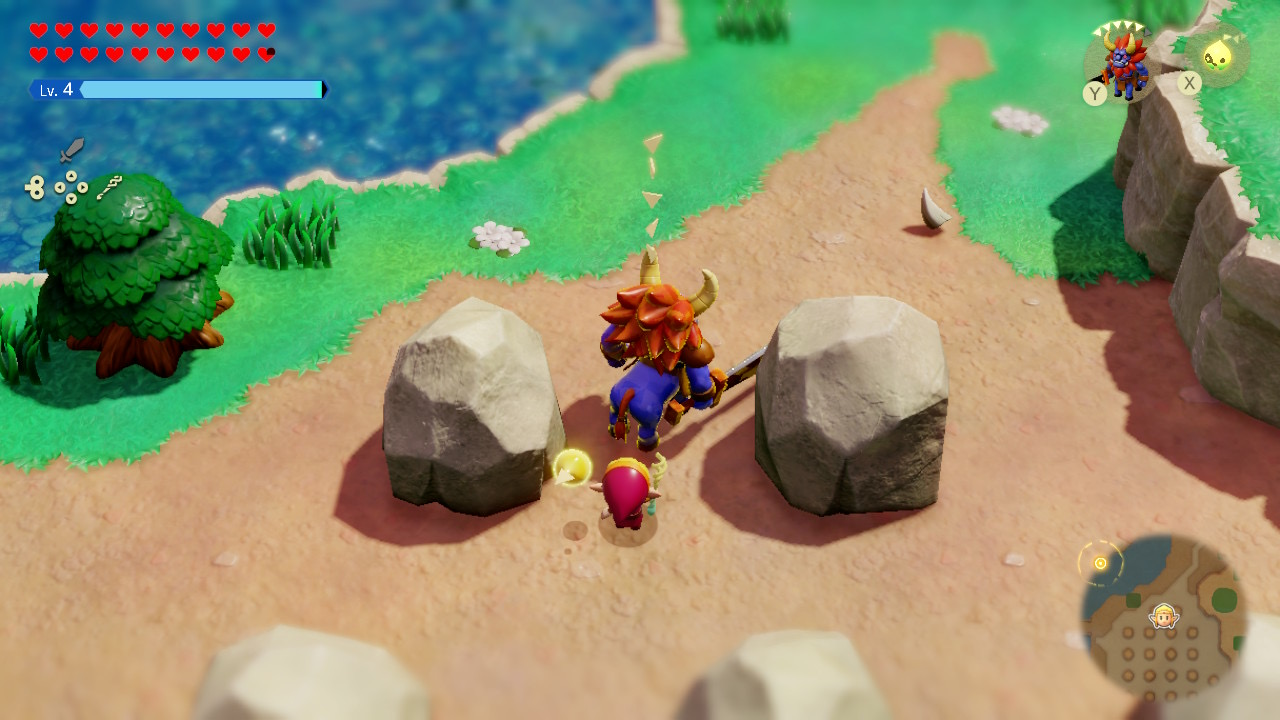
Getting the Lynel echo early is a neat risk vs reward setup
And hey, 100% completion doesn’t necessary pull that many punches either. The mini games are tough to complete, like the custom battles in the Slumber Dojo or level 3 of the mango harvesting one. The accessories and items are everywhere, and locked behind all manner of sidequests and extra areas, and things like heart pieces and might crystals can be tough to track down even with a walkthrough.
So, it’s arguably about as difficult as you make it here. If you’re a clever player that cheeses puzzles and combat encounters with the same few echoes or follows the story on its own, you’ll find the game a cinch to complete, while if you’re a completionist or challenge runner there’s plenty to sink your teeth into.
The Verdict
Regardless, The Legend of Zelda: Echoes of Wisdom is a great game, and one that we’ve not been able to put down since we started playing. With excellent aesthetics, creative mechanics and a nice mix of old and new Zelda mechanics, it’s a joy from start to finish, and one that’s an essential experience for anyone interested in the series or action-adventure games as a whole.
Let’s just hope those UI and performance issues are ironed out in a future patch!
85%
